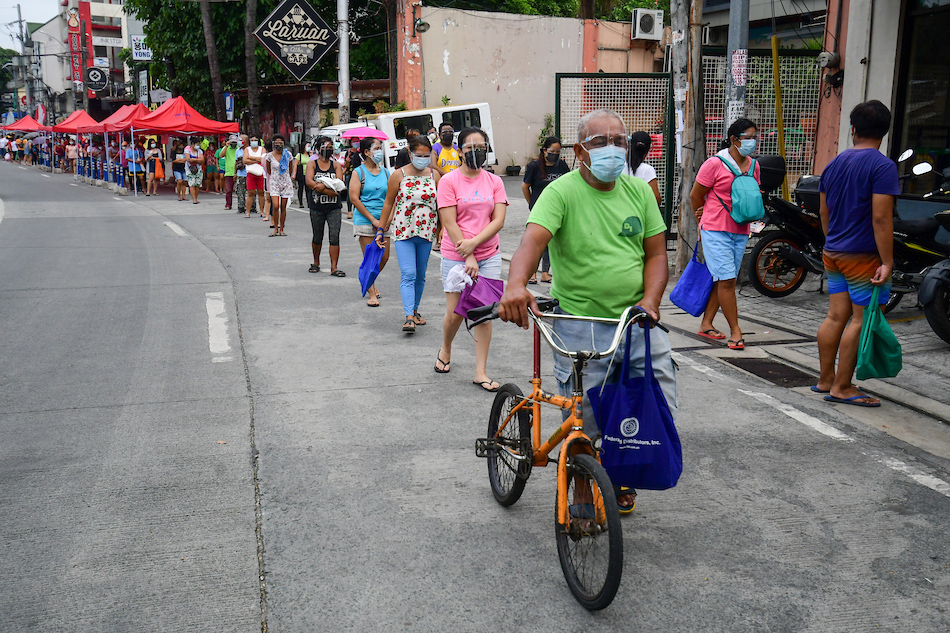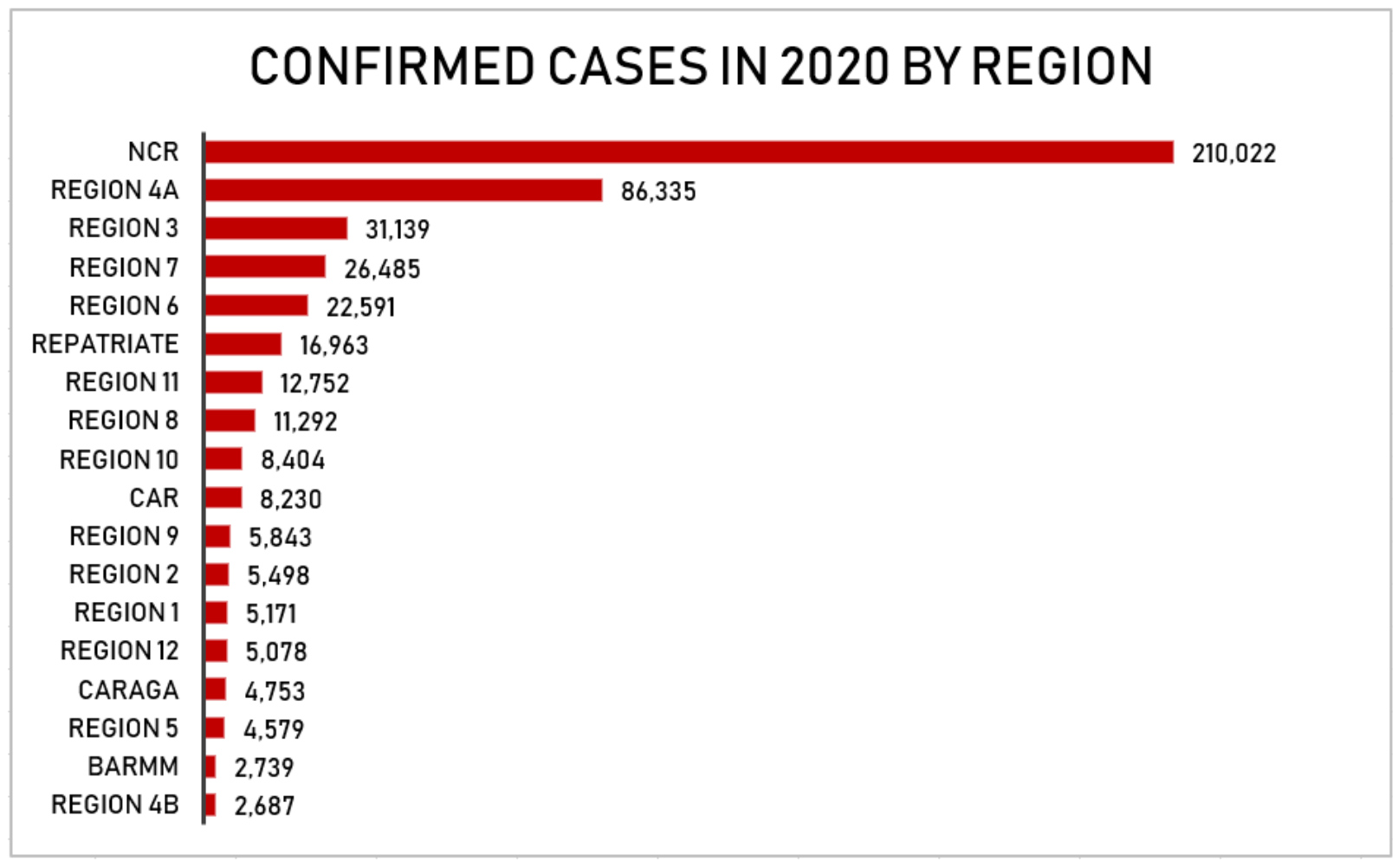NCR, Central Luzon, Calabarzon economies contracted worse than rest of PH | ABS-CBN
ADVERTISEMENT

Welcome, Kapamilya! We use cookies to improve your browsing experience. Continuing to use this site means you agree to our use of cookies. Tell me more!
NCR, Central Luzon, Calabarzon economies contracted worse than rest of PH
Warren de Guzman,
ABS-CBN News
Published Apr 29, 2021 02:05 PM PHT
MANILA - The National Capital Region and 2 other regions, which contribute substantially to the country's gross domestic product, suffered economic contractions that were worse than the national average last year, the state statistics bureau said on Thursday.
MANILA - The National Capital Region and 2 other regions, which contribute substantially to the country's gross domestic product, suffered economic contractions that were worse than the national average last year, the state statistics bureau said on Thursday.
The Philippine Statistics Authority said the NCR, Central Luzon, and Calabarzon all saw their economies suffer double-digit contractions in 2020, worse than the national GDP contraction of 9.6 percent for the year.
The Philippine Statistics Authority said the NCR, Central Luzon, and Calabarzon all saw their economies suffer double-digit contractions in 2020, worse than the national GDP contraction of 9.6 percent for the year.
NCR's economy shrank 10.1 percent, Calabarzon or Region IV-A's economy shrank 10.5 percent, while Central Luzon or Region III suffered a 13.9 percent contraction.
NCR's economy shrank 10.1 percent, Calabarzon or Region IV-A's economy shrank 10.5 percent, while Central Luzon or Region III suffered a 13.9 percent contraction.
Together, the three regions account for 57.9 percent of the country's GDP, based on the PSA's revised and rebased regional accounts. NCR accounts for 31.8 percent of the Philippine GDP, Calabarzon contributes 14.8 percent, and Central Luzon 11.3 percent.
Together, the three regions account for 57.9 percent of the country's GDP, based on the PSA's revised and rebased regional accounts. NCR accounts for 31.8 percent of the Philippine GDP, Calabarzon contributes 14.8 percent, and Central Luzon 11.3 percent.
ADVERTISEMENT
The government said the sharp decline was due to multiple factors, including the impact of the COVID-19 pandemic and related mobility restrictions on services, logistics, and face-to-face transactions.
The government said the sharp decline was due to multiple factors, including the impact of the COVID-19 pandemic and related mobility restrictions on services, logistics, and face-to-face transactions.
“It is the interdependence of the three major regions, and also restrictions on physical movement of people," said National Economic and Development Authority Assistant Secretary Greg Pineda.
“It is the interdependence of the three major regions, and also restrictions on physical movement of people," said National Economic and Development Authority Assistant Secretary Greg Pineda.
Data showed that in the NCR, information and communication, finance and insurance, and public administration and defense were the only industries that grew in 2020.
Data showed that in the NCR, information and communication, finance and insurance, and public administration and defense were the only industries that grew in 2020.
Pineda said this shows the digitalization experienced last year was not enough to offset losses related to the pandemic.
Pineda said this shows the digitalization experienced last year was not enough to offset losses related to the pandemic.
"We are improving in our digital transactions but then again, still most of our transactions are done face to face, physical presence, and services are highly dependent on this.”
"We are improving in our digital transactions but then again, still most of our transactions are done face to face, physical presence, and services are highly dependent on this.”
ADVERTISEMENT
Four other regions suffered bigger contractions than the national average, with the Cordillera Administrative Region, Cagayan Valley, and Central Visayas’s GRDP all contracting 9.9 percent.
Four other regions suffered bigger contractions than the national average, with the Cordillera Administrative Region, Cagayan Valley, and Central Visayas’s GRDP all contracting 9.9 percent.
Western Visayas suffered a 9.7 percent contraction. Central Visayas is the largest regional economy outside Luzon.
Western Visayas suffered a 9.7 percent contraction. Central Visayas is the largest regional economy outside Luzon.
Of the 9 regions, 5 had the highest confirmed COVID-19 cases in 2020-- NCR, CALABARZON, Central Luzon, Central Visayas, and Western Visayas.
Of the 9 regions, 5 had the highest confirmed COVID-19 cases in 2020-- NCR, CALABARZON, Central Luzon, Central Visayas, and Western Visayas.
The PSA noted there were other contributors to the economic decline in 2020, including the eruption of the Taal Volcano, and multiple typhoons and earthquakes.
The PSA noted there were other contributors to the economic decline in 2020, including the eruption of the Taal Volcano, and multiple typhoons and earthquakes.
However, COVID-19 was the main catalyst for the contraction.
However, COVID-19 was the main catalyst for the contraction.
ADVERTISEMENT
Pineda said all of the worst-hit regions were interdependent, so the heavy losses they suffered together were unavoidable.
Pineda said all of the worst-hit regions were interdependent, so the heavy losses they suffered together were unavoidable.
The Philippines imposed the longest and strictest lockdown last year to try to curb the spread of COVID-19. This led to the Philippines' worst economic contraction since the end of World War 2.
The Philippines imposed the longest and strictest lockdown last year to try to curb the spread of COVID-19. This led to the Philippines' worst economic contraction since the end of World War 2.
Despite the lockdowns, the country still ended up with the worst rate of COVID-19 infection in Southeast Asia.
Despite the lockdowns, the country still ended up with the worst rate of COVID-19 infection in Southeast Asia.
The Philippines went from an emerging economic tiger among major ASEAN economies, ahead of Malaysia, Indonesia, Thailand and Singapore in terms of GDP growth in 2019, to the worst in the class
The Philippines went from an emerging economic tiger among major ASEAN economies, ahead of Malaysia, Indonesia, Thailand and Singapore in terms of GDP growth in 2019, to the worst in the class
Read More:
NCR
Central Luzon
Calabarzon
gross regional domestic product
regional economy
PSA
Philippine Statistics Authority
Greg Pineda
ADVERTISEMENT
ADVERTISEMENT





